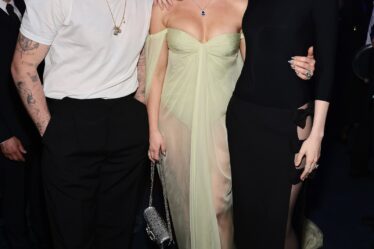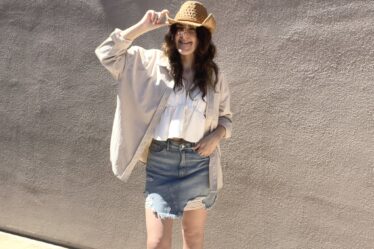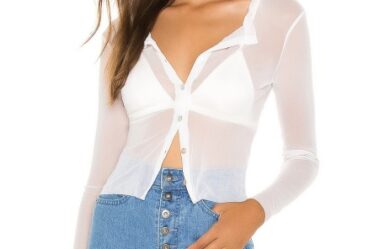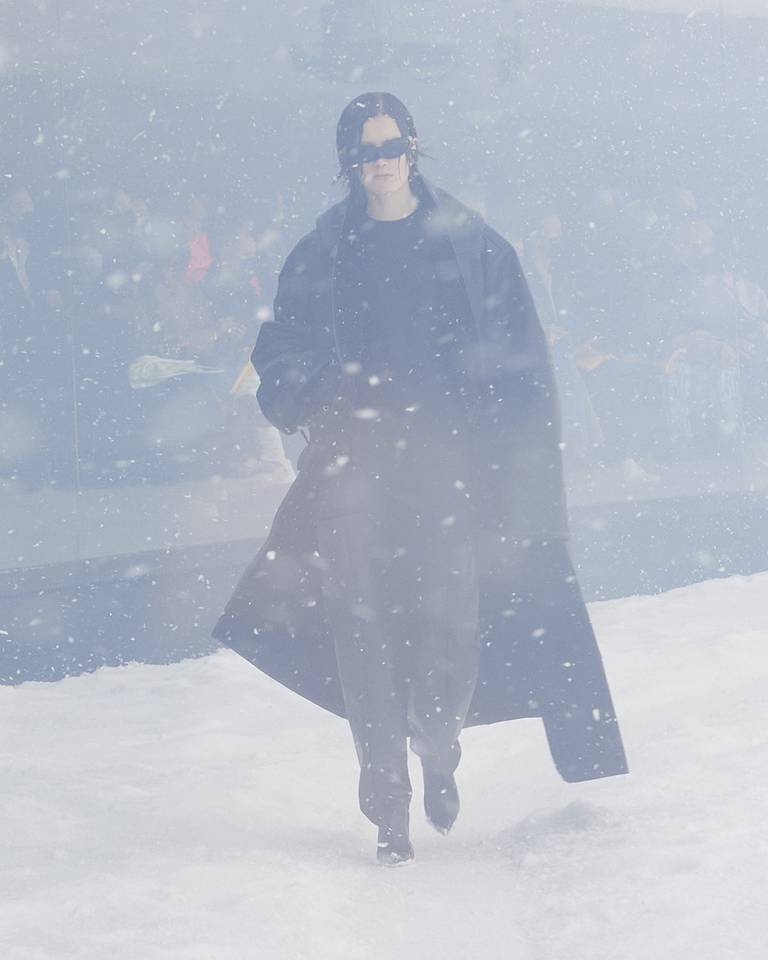
Stella McCartney’s newest bag has taken four years to make it to the market.
Though its half-moon shape and chunky chain details reflect the brand’s signature Frayme style, the mini satchel is made of mycelium, the branching root structure of fungi that forms the base for a new generation of materials that are just making the leap from labs to store shelves.
The bag’s launch as a tight run of just 100 items in July is part of a flurry of highly limited debuts from brands ranging from Hermès to Lululemon that aim to test the market for a cohort of mycelium-based leather alternatives for the first time this year.
It’s a critical moment for a next-generation material that has attracted hundreds of millions of dollars of investment from brands and venture funds betting that growing consumer demand for vegan and less environmentally damaging products is set to disrupt the market for some of fashion’s highest-margin and valuable products.
The items coming to market now will be a gauge of both consumer appetite and product readiness as leading materials startups in the space prepare for wider commercialisation with the aim to eventually make mycelium-based items mainstream.
To succeed, the products need to be as good as leather, so “people won’t even see any compromise on … the touch or the feel or the wearability,” McCartney said during an interview in the light-filled atelier at her brand’s London headquarters. “Everyone’s trying to make this work. Everybody wants to make it work. But until it works, they’re not going to take a leap of faith. Because they’ve got something that currently works very well for them.”
The designer has been working on the challenge longer than most, first experimenting with Mylo, a material developed by California-based startup Bolt Threads, in 2018. The initial prototype was a museum piece — quite literally. The bag (a version of McCartney’s Falabella style) was displayed in London’s Victoria & Albert Museum as part of its “Fashioned from Nature” exhibition in 2018.
It was a groundbreaking glimpse at what might be possible, but it was far from market-ready. The material was brittle and cracked at the back, with a flaky, paper-like texture that was little like leather’s supple feel.
It took seven more iterations and years of close collaboration with the scientists at Bolt Threads and McCartney’s manufacturing partners to improve the material’s performance, quality and feel to a point where it was ready for sale. Early models had a sticky texture and were easily damaged. The quality of the material was inconsistent. And McCartney’s team had to figure out with its factories how to make products stick together because Mylo could not hold standard glues.
“I’m obviously a bit of a glutton for punishment,” McCartney said while contemplating a prototype of the first style set to make it to market, a structured matte black bag with a slightly pebbled texture. “Hopefully in the history of the fashion industry, this will be a mark that will be looked back on … like, ‘wow, this was the beginning, the first time we ever saw that,’ and now it’s mainstream.”
Demand for New Materials
Humans have been wearing clothing, bags and shoes made from animal skin for hundreds of thousands of years. Today, the global luxury industry thrives on leather goods — prized for their versatility, durability, aesthetic and links to powerful cultural archetypes from cowboys to rockers. The category made up around half of the roughly $100 billion in sales generated by Europe’s five largest luxury companies in 2020, according to equity analysts at Bernstein.
But the leather supply chain is also linked to animal cruelty and comes with significant environmental cost. Now, a rapid shift in consumer tastes towards products that live up to higher environmental and ethical standards is driving change. Other once highly valued fabrics like fur and exotic skins have already fallen from favour among some of luxury’s biggest players.
While leather is much more entrenched, its links to industrial cattle farming and polluting tanning processes also make it a particularly high-impact material that’s attracting mounting scrutiny. The potential for disruption is already playing out in associated sectors as plant-based meats and milk enjoy rapid growth, fuelled by a young consumer base concerned about both animal rights and the climate crisis.
Change has been slower to come to fashion, where (largely plastic) leather alternatives have historically been seen as cheaper, lower quality options that are difficult to position as more environmentally friendly. (It’s a challenge LVMH-backed McCartney is all too familiar with. Her refusal to use real leather in her collections was seen as a huge risk when she launched her brand with rival Kering (then Gucci Group) in 2001. And though she’s proven out the business case, the quest for real bio-based options is ongoing.
Interest is rapidly growing elsewhere, too. The market for innovative alternatives to animal skins is expected to be worth $2.2 billion by 2026, according to the nonprofit Material Innovation Initiative. Companies including Gucci- and Balenciaga-owner Kering, Prada and Hermès are experimenting with alternatives.
“There is an under-served segment of the market who want high quality, natural materials in line with their values. That is a segment the industry is very excited about,” said Matt Scullin, chief executive at MycoWorks, the California-based startup that convinced top-end leather goods powerhouse Hermès to break with tradition and experiment with its engineered mycelium. “That is where we stand to have the most impact in helping luxury brands grow in the near term and could be disruptive in the long term.”
Hopefully in the history of the fashion industry, this will be a mark that will be looked back on.
Materials made from mycelium’s branching webs have attracted particular interest. Compared to other next-generation alternatives, the process to grow sheets of interlacing mushroom roots is relatively mature, requires little energy or land and has a manufacturing process that is relatively easy to scale. That’s prompted a nearly unprecedented collaboration between brands, material science startups and manufacturers to get the technology to market.
Stella McCartney’s new bag is one product of an unusual consortium that also includes Kering, Adidas and Lululemon which have all committed to developing products using Mylo. Lululemon launched two bags with Mylo trims in February, while Adidas is aiming to roll out products within a year.
New York-based material science company Ecovative added Reformation and footwear company Wolverine to a group of brands working to commercialise its material last week. Meanwhile, Balenciaga’s Winter 2022 collection featured a dramatic full-length coat crafted from Ephea, a mycelium-based material developed by Italian manufacturer Sqim. Hermès said it expects to bring out items using MycoWorks’ engineered mycelium in the coming months.
“Mycelium materials are the best solution currently available for fashion products,” said Christian Tubito, director at Kering’s Material Innovation Lab. “It’s a little step when compared to other materials used for centuries in the fashion industry, but that little step is necessary in order to make a bigger one.”
Supply Chain Challenges
There are still significant challenges before mushroom materials make it to the mainstream.
Different materials have varying properties and qualities and aren’t all appropriate for the same applications. For instance, McCartney’s team found Mylo is still quite rigid meaning more development is needed for use in slouchy bag styles or ready-to-wear. The material also still requires plastic content to ensure quality, feel and durability, something the Bolt Threads team is actively working to reduce, chief executive Dan Widmaier said.
Hermès’ collaboration with MycoWorks was initially due to launch at the end of last year but still hasn’t hit the market. “This has not been about bringing something to market fast, it has been about bringing the right thing to market at the best possible quality that is scalable,” said Scullin.
And while companies are working to scale up production, volumes are currently limited and prices are high. McCartney’s Mylo Frayme bags are set to retail at £1,995 ($2,485). The brand’s most similar model currently for sale retails at £1,150. Adidas has held off rolling out products made from the material in part to ensure it can secure consistent quantities and quality of supply, said Paul Smith, the company’s senior director of innovation.
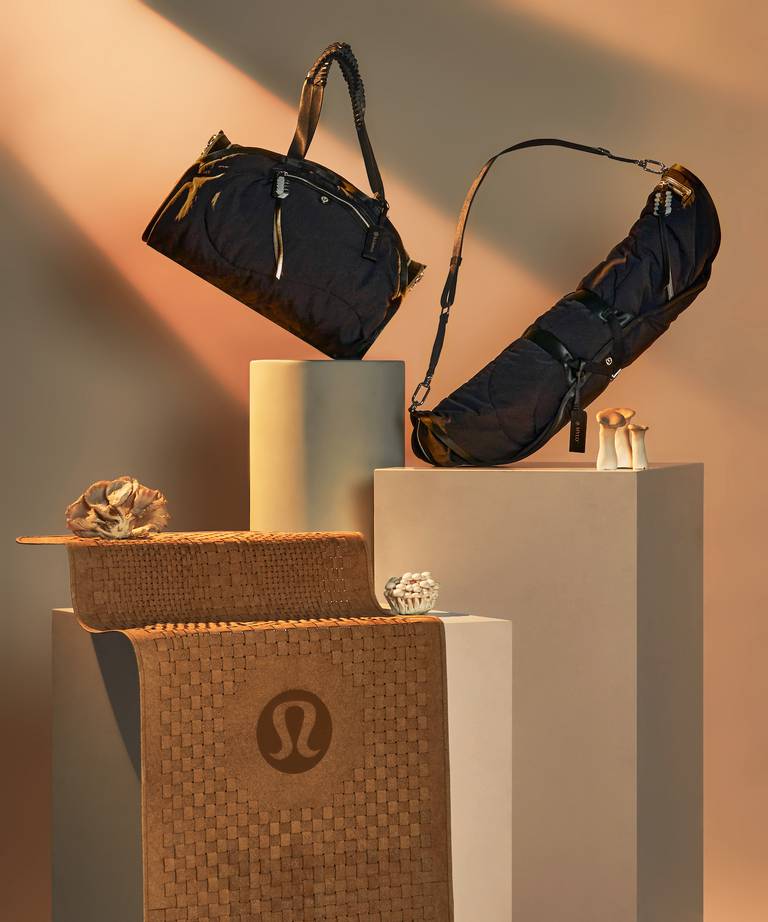
Efforts to resolve some of those kinks are already underway. MycoWorks is working to open a new facility that can produce millions of square feet of its engineered mycelium each year. Bolt Threads is in the process of scaling up a million square metre plant in the Netherlands, with plans to expand into the double-digit million square metre range within the next three years.
Though a square foot of Mylo currently costs around $30 per square foot, on par with top calf leather, which retails for around $25 to $40 a square foot, Widmaier said, with scale, it could come down to within the single-digit dollar range.
A New Status Symbol?
Perhaps just as important as the practical business challenges, the current moment is a test for whether consumers are ready to embrace mycelium as a luxury material.
Some, like Prada’s head of sustainability and marketing Lorenzo Bertelli, believe “the consumer is not ready.” The Milanese company is holding off on scaling up its experiments with leather alternatives, he told BoF in an interview earlier this month.
At Kering, it’s notable that the first brand to bring a mycelium-based product to market is Balenciaga, a label known for challenging fashion’s conventions and pushing social boundaries. But where Balenciaga goes, others often follow.
Lululemon’s initial Mylo products generated a strong consumer response globally, despite selling at a premium to the brand’s regular products, said chief product officer Sun Choe. The company is planning to roll out further products towards the end of next year. McCartney’s Frayme bags will go on wider release in 2023, with plans to also introduce a new colour.
“The true barometer at the end of the day will be the customer reaction — sales will be our final litmus test,” said Julie Gilhart, chief development officer at brand platform Tomorrow. “If the product has quality, style and is not more expensive than leather, then it’s a game-changer.”


